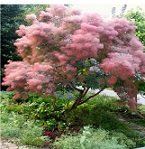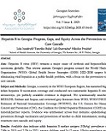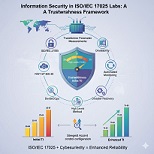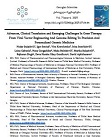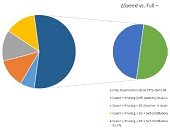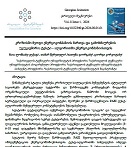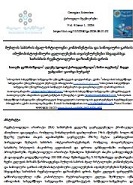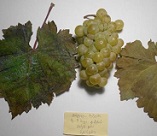Media Environment in Georgia during the Crisis
Downloads
Viable, free media is a crucial component of democratic progress in Georgia. 30 years after the collapse of the Soviet Union and gaining independence, safety of journalists while carrying out professional duties continues to be one of the key indicators of what constitutes progress in the country’s media democracy. This research was triggered by the actualisation of the acute and, in some ways, spontaneous media threat that arose during the pre-election period. More specifically, on 5 July 2021, two months before Georgia’s local self-government municipal elections, media workers fell victim to a premeditated attack by pro-Russian radical groups during the coverage of demonstrations. As a result, 52 journalists from more than 10 media outlets, cameramen and photographers were assaulted and a TV Pirveli cameraman, Lekso Lashkarava, died a few days later as a result of heavy injuries received during the demonstration.The aim of the research is to distinguish the traits prevalent to the media environment during the times of crisis and even more specifically, during the pre- and post- election periods (in particular, during 2021 local governmental elections in Georgia). The research also responds to the question of how political polarization and crises affect media and the macro and micro threats they reveal. The study identifies these media threats and assesses the reality of media environment as seen through journalists’ eyes. For research design, mixed research methodology was chosen, more specifically, a sequential explanatory design. The research was conducted in two phases: the first phase involved accumulation of quantitative data (through online survey: 183 respondents from 56 media sources) and analysis, following which the second phase took place, involving qualitative research (3 focus group discussions).
The research answers the questions as it follows:
- How safe do media workers feel when performing their professional duties?
- What kind of threats have emerged during the 2021 pre-election media environment and what are the expectations?
- What are some of the support mechanisms for the improvement of media environment and what needs to be done so that a safer environment for media workers is created?
During the research process, macro (4) and micro (6) media threats were identified. They are analysed in sub-chapters in greater detail. These threats are interconnected and have their own structure and aims. Media threats, which emerged during the discussion, contribute to self-censorship and escalation of fear, media credibility, reduction of support, and destabilizing media institutional viability.Political polarization and polarization between media organizations were identified as a major macro media threat. Micro threats that were identified as a result of polarization are:
- Stigmatization of journalists and media (labelling them as biased towards certain political parties) and attempted smear campaigns;
- Disrupting execution of journalist duties. Among such actions are creating obstacles in providing a balanced narrative and bringing a quality media product to the public, which is primarily reflected in premeditated restriction to sources and surveillance for the purpose of disrupting the work process; etc.
As a result of this study, supportive instruments for strengthening media environment have been put forward.
Downloads
Metrics
Bishop, Bill (2008). The Big Sort: Why the Clustering of Like-Minded America Is Tearing Us Apart. New York: Houghton Mifflin Harcourt.
Carothers T, O’Donohue A: Democracies Divided: The Global Challenge of Political Polarization. Brookings Institution Press; 2019.
DiMaggio, P., Evans, J., Bryson, B., 1996. Have Americans’ social attitudes become more polarized? Am. J. Sociol. 102, 690–755.
Dixit K. Avinash, Weibull W. Jörgen, Political polarization, Proc Natl Acad Sci U S A. 2007 May 1; 104(18): 7351–7356. Published online, 2007 Apr 23. doi: 10.1073/pnas.0702071104, CID: PMC1863477
Gerbner, George, Larry Gross, Michael Morgan, and Nancy Signorielli (1980). “The ‘Mainstreaming’ of America: Violence Profile No. 11.” Journal of Communication 30(3): 10-29.
Gersamia M., Freedman E., Challenges to Creating Vibrant Media Education in Young Democracies: Accreditation for Media Schools in Georgia, Journalism & Mass Communication Educator, SAGE, 2017, Vol. 72(3) 322–333, AEJMC 2017, DOI: 10.1177/1077695817710104http://journals.sagepub.com/home/jmc
Güneş Ertan, Ali Çarkoğlu, S. Erdem Aytaç, Cognitive political networks: A structural approach to measure political polarization in multiparty systems, Social Networks, Volume 68, 2022, Pages 118-126, ISSN 0378-8733, https://doi.org/10.1016/j.socnet.2021.05.004.
(https://www.sciencedirect.com/science/article/pii/S0378873321000460)
Hasan Mubashar, Wadud Mushfique, Re-Conceptualizing Safety of Journalists in Bangladesh, Media and Communication (ISSN: 2183–2439) 2020, Volume 8, Issue 1, Pages 27–36 DOI: 10.17645/mac.v8i1.2494
Howells, R. (2001). Media, education and democracy. European Review, 9(2), 159-168
Iyengar, Shanto, Hahn, Kyu S., 2009. Red media, blue media: evidence of ideological selectivity in media use. J. Commun. 59, 19–39.
Jasperson A., Gollins J., Walls D., Polarizarion in the 2012 presidental debates, Political Communications in Real Time, 2017, Routledge, p. 196-225.
Journalist safety and self-censorship, edited by Anna Grøndahl Larsen, Ingrid Fadnes, et al, Routledge, 2020, p. 1-7
Kis D., Censorship/self censorship, INDEX ON CENSORSHIP 1/86, available at https://journals.sagepub.com/doi/pdf/10.1080/03064228608534021(last seen Oct 20, 2021)
Lauka, A., McCoy, J., Firat, R.B., 2018. Mass partisan polarization: measuring a relational concept. Am. Behav. Sci. 62 (1), 107–126.
Levitsky S, Ziblatt D: How Democracies Die. Crown; 2018
Masur Philipp K., Situational Privacy and Self-Disclosure, Communication Processes in Online Environments, Springer, Germany, 2019, ISBN 978-3-319-78883-8, ISBN 978-3-319-78884-5 (eBook), https://doi.org/10.1007/978- 3- 319- 78884- 5
McQuail D., Mass Communication Theory, 2010, SAGE.
Melki M.. Pickering A.,Ideological polarization and the media, Economics Letters, Volume 125, Issue 1, 2014, Pages 36-39, ISSN 0165-1765, https://doi.org/10.1016/j.econlet.2014.08.008.
(https://www.sciencedirect.com/science/article/pii/S0165176514002985)
Neal, Z.P., 2020. A sign of the times? Weak and strong polarization in the US Congress, 1973–2016. Soc. Netw. 60, 103–112.
Orgeret Kristin Skare, Tayeebwa William, Editorial, Introduction: Rethinking Safety of Journalists, Media and Communication (ISSN: 2183–2439) 2020, Volume 8, Issue 1, Pages 1–4 DOI: 10.17645/mac.v8i1.2873, https://www.cogitatiopress.com/mediaandcommunication/article/view/2873/2873 (last seen on Oct. 7, 2021).
Safe. Strong. Viable. The symbiosis between media safety and media viability, Deutsche Welle Akademie, Germany, 2021. https://www.dw.com/en/safe-strong-viable-the-symbiosis-between-media-viability-and-media-safety/a-57334604 (last seen on Oct. 3, 2021).
Safety of Journalists Covering Protests, Preserving Freedom of the Press During Times of Turmoil, Issue brief in the UNESCO series: World Trends in Freedom of Expression and Media Development, 2020 available from https://unesdoc.unesco.org/ark:/48223/pf0000374206 (last seen on Sept. 30, 2021)
Slater, Michael D., 2007. Reinforcing spirals: the mutual influence of media selectivity and media effects and their impact on individual behavior and social identity. Commun. Theory 17 (3), 281–303.
Towards a Research agenda on the safety of journalists, United Nations, UNESCO, 2015, available from https://en.unesco.org/sites/default/files/draft_research_agenda_safety_of_journalists_06_2015.pdf (last seen on Sept. 26, 2021).
Vibrant information barometer 2021, IREX, available at https://www.irex.org/sites/default/files/Vibrant%20Information%20Barometer%20Full%20version.pdf (last seen Oct. 20)
Walulya Gerald, Nassanga Goretti L., Democracy at Stake: Self-Censorship as a Self-Defence Strategy for Journalists, Media and Communication (ISSN: 2183–2439) 2020, Volume 8, Issue 1, Pages 1–4 DOI: 10.17645/mac.v8i1.2873.
Wilson A., Parker V.,Feinberg M., Polarization in the contemporary political and media landscape, Current Opinion in Behavioral Sciences, Volume 34, 2020, Pages 223-228, ISSN 2352-1546, https://doi.org/10.1016/j.cobeha.2020.07.005.
(https://www.sciencedirect.com/science/article/pii/S2352154620301078)
Yesil Murat M., The Invisible Threat for the Future of Journalism: Self-Censorship and Conflicting Interests in an Increasingly Competitive Media Environment, International Journal of Business and Social Science Vol. 5 No. 3; March 2014, available at https://ijbssnet.com/journals/Vol_5_No_3_March_2014/9.pdf (last seen oct 20, 2021)
კაკაჩია კ., პატარაია თ., სოციალური ქსელების როლი ქართულ პარტიულ პოლიტიკაში, საქართველოს პოლიტიკის ინსტიტუტი, 2013.
სილაგაძე გ., გოზალიშვილი ნ., უკიდურესი პოლიტიკური პოლარიზაცია, როგორც დემოკრატიზაციის პროცესის წინაშე არსებული საფრთხე, 2019. ხელმისაწვდომია https://bit.ly/3pMbafg (ბოლო ნახვა 26 ოქტომბერი, 2021)

This work is licensed under a Creative Commons Attribution-NonCommercial-NoDerivatives 4.0 International License.


















































